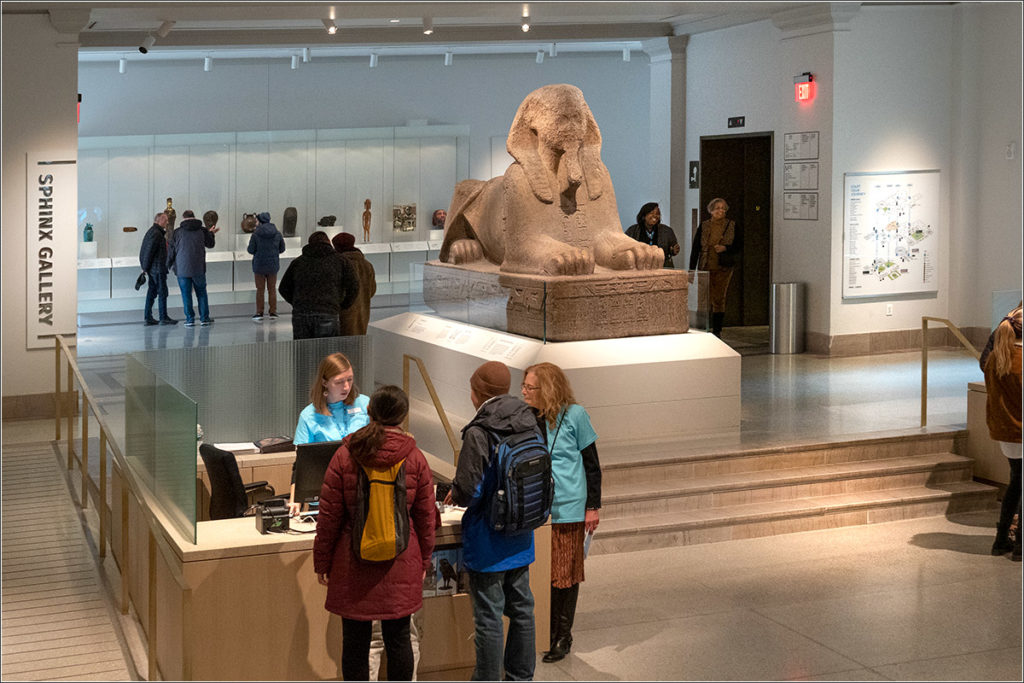
PHILADELPHIA (Nov. 17, 2019) — Ninety-three years after it was “permanently” sited in a lower level gallery of the Penn Museum, and five months after a major engineering project moved it to an upper level on the other side of the museum complex, the 13-ton sphinx of Ramses II was unveiled in its new front entrance setting this weekend.
The 3000-year-old red granite sculpture’s “Sphinx Gallery” is now the first thing visitors see when they walk through the main doors. The new gallery is the fourth area of the sprawling 132-year-old museum dedicated to the history, culture and artifacts of ancient Egypt in a way that has made the institution Philadelphia’s “Mummy Central.”
The cavernous former lower level site of the Sphinx is now undergoing a renovation and redesign that will turn it into a pharaoh’s palace, complete with massive architectural elements from a Temple erected by Ramses II. Three thousand years ago, Penn’s sphinx was part of that royal complex in Memphis from which the great Ramses ruled Egypt. The new lower level palace gallery is slated for opening in 2023.


